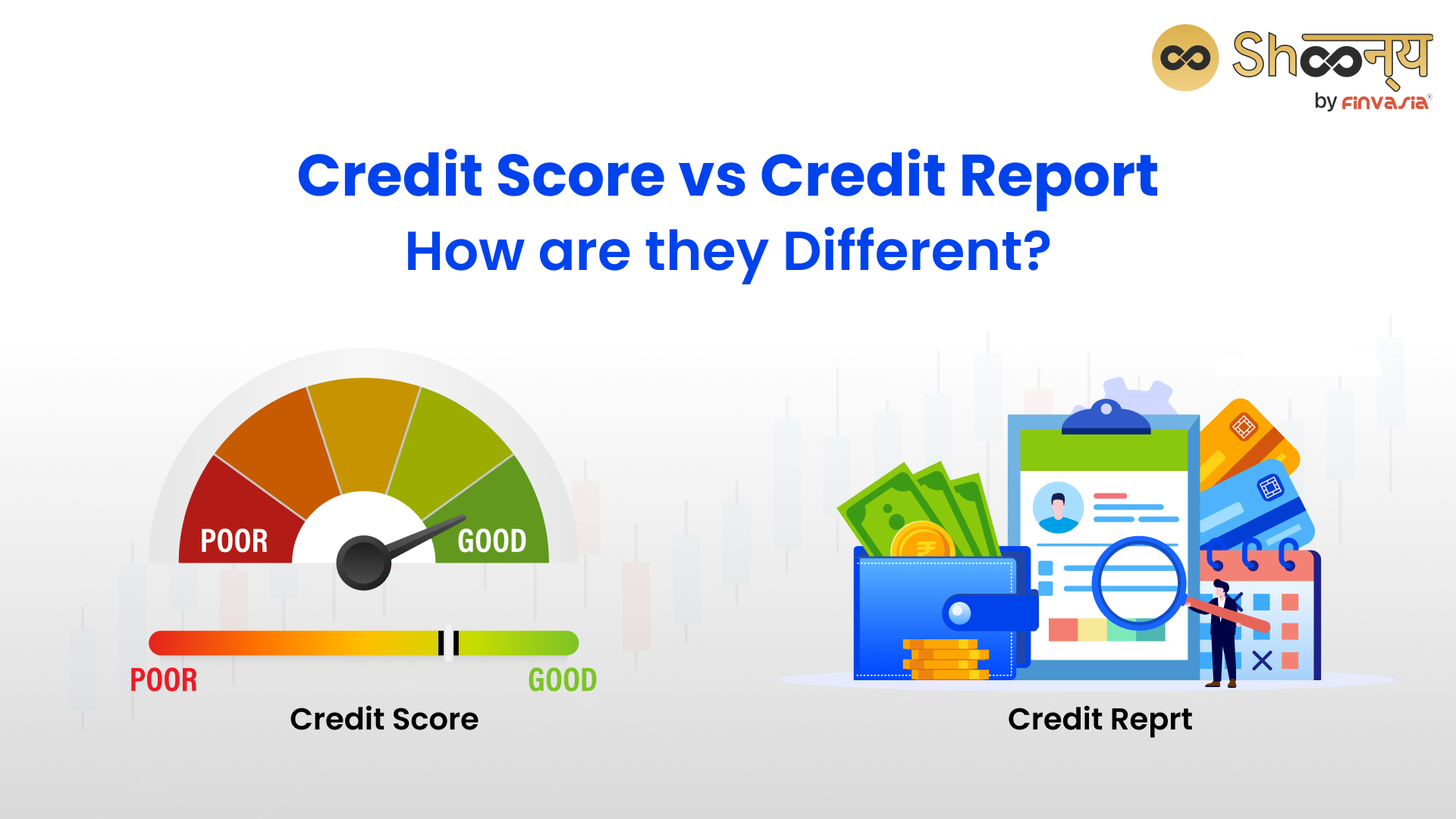Credit Score vs Credit Report: Meaning, Purpose, and Differences

Ever wondered about those credit scores and reports everyone talks about? Let’s make it simple. Your credit score is like a grade for your money habits, and your credit report is the story behind it.
Credit scores and credit reports are frequently talked about in finance and banking. Whether you’re using a payment app or visiting a bank or fintech website, they often recommend checking your credit score and regularly reviewing your credit report.
What is the real difference between a credit score and a credit report?
Your credit score is a three-digit number that ranges from 300 to 900, and your credit report’s detailed financial information is worth paying attention to.
Let’s understand the essence of credit score vs credit report.
In India, Credit Reports and Credit Scores are provided by Credit Information Companies (CICs) or credit bureaus. The information for generating these reports and scores comes from lending banks and Non-Banking Financial Companies (NBFCs) on a monthly basis. The four leading credit bureaus in India are TransUnion CIBIL, CRIF High Mark, Experian, and Equifax.
A credit score and a credit report are both important indicators of your financial health, but they are not the same thing.
What is a Credit Score
A credit score serves as a numerical representation of an individual’s creditworthiness to financial institutions like banks and NBFCs. Lenders utilise this score to assess whether an individual is reliable in repaying borrowed funds promptly. In India, entities responsible for calculating credit scores employ a scale ranging from 300 to 900. Individuals with a score exceeding 750 are generally regarded as reliable borrowers.
What is a Credit Report
A credit report, also known as a Credit Information Report (CIR), provides a comprehensive summary of your credit information, influencing your credit score. This report encompasses details like the number of credit cards and active loans, overdraft facilities, applied loans, and your repayment behaviour. It consists of six sections, covering information about your credit score, personal details (name, age, Permanent Account Number), contact details (address, phone number, email), employment details, DPD (Days Past Due), late payments, defaults (if any), and credit account information, including credit inquiries.
Credit Score vs Credit Report: An Overview
Here is a table that summarises the differences between credit report and credit score:
| Basis | Credit Report | Credit Score |
| Usage by Financial Institutions | Studied by institutions before processing credit applications, provides comprehensive credit history | Considered regularly by institutions to assess creditworthiness |
| Purpose | Assists lenders in understanding an applicant’s credit behaviour and history | Reflects current credit behavior and is useful for personal tracking |
| Impact on Loan Processing | Essential for lenders to make decisions about loan applicants | Influences loan approval and interest rates |
| Length and Depth of Information | A comprehensive 18–20 page document detailing the entire credit history | Represents a snapshot of creditworthiness |
| Potential Benefits | Provides a holistic view of credit history, helping individuals understand factors affecting their credit score | Facilitates smoother loan processing and may secure lower interest rates |
| Score Range | Not applicable; credit reports do not have a numerical range. | Ranges from 300 to 900, with higher scores indicating lower risk. |
Credit Score vs. Credit Report: Purpose and Utilisation
Credit reports and credit scores are utilised by various entities in different ways, depending on their specific requirements:
Mortgage Lenders
Credit Reports: Used to identify any red flags that may indicate potential repayment issues.
Credit Scores: The middle score from all three bureaus is often considered as a reference.
Insurers
Credit Reports: Examined before approving requests, with a separate algorithm used to generate a credit score.
Credit Scores: Traditional FICO scores are not commonly used by insurers.
Auto Lenders
Credit Reports: Examined for any warning signs regarding repayment history.
Credit Scores: Used to assess eligibility for loans and determine interest rates.
Credit Card Providers
Credit Reports: Less emphasised, as most applications are processed quickly online.
Credit Scores: Typically, one credit score is considered, often the middle one.
Collection Agencies
Credit Reports: Analyzed to prioritize accounts for payment.
Credit Scores: Used to predict the likelihood of an individual repaying debts.
Employers
Credit Reports: Occasionally checked as part of background checks to minimise legal liability and prevent embezzlement.
Credit Scores: Generally not used by employers.
Credit reports and credit scores significantly impact a cardholder’s financial life, influencing their ability to secure loans in the future. Satisfactory reports and scores are crucial for financial well-being.
How Can You Improve Your Credit Score?
There are multiple components of your credit score that include payment history, current debt, credit history length, new credit, and types of credit used.
You can keep the following things in mind:
- Pay bills on time.
- Use less of your available credit.
- Avoid opening multiple credit accounts rapidly.
- Keep older credit cards active.
- Manage different types of credit responsibly.
Conclusion
Understanding the differences between credit scores and credit reports is key to managing your financial health. Regular monitoring and improvement can positively impact your creditworthiness, influencing loan approvals and interest rates.
______________________________________________________________________________________
Disclaimer: Investments in the securities market are subject to market risks; read all the related documents carefully before investing.








